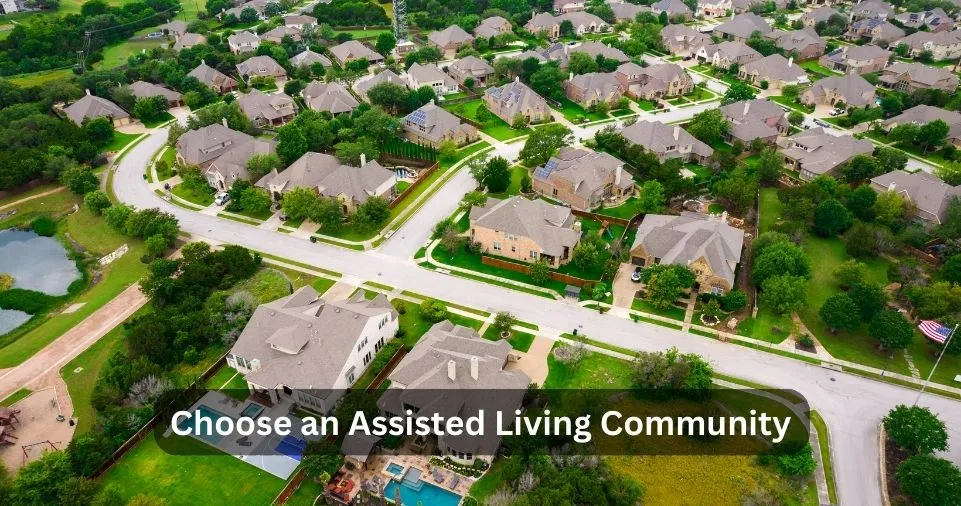As we age, finding a supportive and engaging environment becomes crucial for maintaining a high quality of life. For many seniors, an assisted living community can provide the perfect blend of independence and support. But with so many options available, how do you choose the right one?
For instance, if you’re exploring options like St. Augustine assisted living, you’ll want to consider various aspects such as care levels, amenities, and location.
By understanding these elements, you’ll be better equipped to make an informed decision. Each community offers unique features, so it’s essential to know what to look for to find the one that fits your lifestyle and needs best.
Key Takeaways
- Learn about the essential factors to consider when choosing an assisted living community.
- Discover insights into evaluating care levels, amenities, and overall environment.
- Gain an understanding of how to conduct effective research and visits to prospective communities.
Factors to Consider
Several key factors should be on your list when evaluating assisted living communities. Prioritizing these factors can help ensure that the community you choose provides all the essential services and support needed for a comfortable living experience:
Care Levels
Determine the types of care and medical support offered. Does the community cater to specific conditions such as dementia, Alzheimer’s, or mobility impairments?
Personalized care plans are often crucial for managing health effectively. Evaluate if the staff is trained in handling specific medical needs and if they pay attention to personalized care details.
Amenities
What facilities are available on-site? Look for amenities like fitness centers, social activities, and dining options. Amenities play a significant role in improving the quality of life.
Social interaction and physical fitness are vital for mental and physical health. Look for communities that offer a wide range of activities to keep residents engaged and active.
Safety and Security
Is the community secure and accessible? Check for features like emergency call systems, secure entrances, and well-lit common areas.
Safety is paramount in an assisted living environment. Ensure the community adheres to all safety standards and provides round-the-clock security measures.
Location
Proximity to family, healthcare facilities, and local attractions can significantly impact your decision. Being closer to loved ones and having easy access to medical care can enhance the overall experience.
A desirable location can also encourage frequent visits from family and friends, which is crucial for emotional well-being.
ALSO READ: Enjoy Your Trip: Car Rental Best Practices
Evaluating the Community Environment
Interaction with Staff
Observe how staff members interact with residents. Are they friendly, patient, and respectful? The quality of interaction can significantly affect the residents’ overall experience. Friendly and responsive staff are often a good indicator of the community’s overall atmosphere.
Staff members should provide compassionate care, exhibit patience, and respectfully approach the residents. Staff-resident relationships play a significant role in fostering a supportive and comfortable environment.
Resident Engagement
Look for signs of an active and engaged resident community. Are there plenty of social activities and events?
A vibrant social environment can greatly enhance a resident’s quality of life. According to a National Center for Biotechnology Information study, a positive social environment can significantly improve residents’ well-being.
Regular social interaction and engaging activities can help prevent loneliness and depression, contributing to better overall mental health.
Cleanliness and Maintenance
Check the cleanliness of common areas and residential units. Well-maintained facilities indicate a commitment to quality. Clean, well-kept environments are not just hygienic but can also be more inviting for residents and visitors.
Regular maintenance and cleanliness speak volumes about the community’s standards and their genuine care for the residents’ living conditions. Pay attention to details like the condition of the grounds, the tidiness of common areas, and the overall upkeep of residential spaces.
Financial Considerations
Cost is a significant factor in choosing an assisted living community. Here are some points to consider:
Monthly Fees
Understand what is included in the monthly fees and inquire about potential additional costs. Knowing exactly what you’re paying for can help you avoid unexpected expenses. Ensure clarity on what services are included in the fees and whether extra charges for additional care or amenities exist.
Payment Options
Does the community accept long-term care insurance, Medicaid, or other payment methods?
Ensure you clearly understand your payment options to avoid financial stress later.Some communities offer financial assistance or payment plans to help manage costs more effectively.
Financial Planning
Planning your budget carefully and considering long-term affordability is essential. Consulting with a financial advisor can help you create a sustainable plan for your needs. Long-term financial planning can ensure that you have the necessary funds to cover all expenses without compromising the quality of care and services.
Making the Final Decision
After evaluating all the factors and visiting several communities, it’s time to decide. Trust your instincts and choose a place where you feel comfortable, safe, and welcome. The right assisted living community should meet your practical needs and make you feel at home.
Remember, the right assisted living community can significantly enhance your quality of life, providing you with the support you need while maintaining your independence. Before choosing, consider all aspects, including the long-term benefits and potential for social engagement.
Conclusion
Choosing an assisted living community is a significant decision that requires careful consideration. You can find a community that meets your needs and preferences by focusing on key factors such as care levels, amenities, environment, and financial aspects.
Take your time to research thoroughly and visit multiple communities to ensure you make the best choice for your future well-being.
Remember, your decision will have a lasting impact on your quality of life, so it’s worth investing the time and effort to find the perfect fit.







